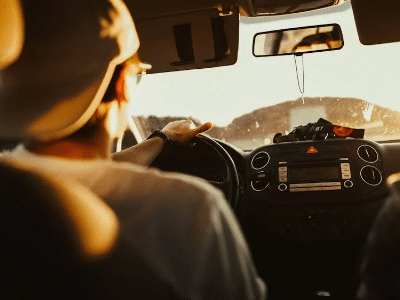The art world is undergoing a profound transformation thanks to the rapid advancements in artificial intelligence (AI). Among the most revolutionary innovations are AI Drawing Generators — tools that harness machine learning and neural networks to create stunning visuals with minimal human input. These intelligent systems are not just simplifying the creative process; they are redefining what it means to be an artist in the 21st century.
From professional graphic designers and digital artists to casual hobbyists and beginners, AI Design Tools are leveling the playing field, allowing people to bring their visions to life in ways that were previously unimaginable. With Drawing AI, even those without formal training can produce remarkable art, pushing the boundaries of creativity and innovation.
In this comprehensive exploration, we will dive deep into how AI Drawing Generators are reshaping the future of art, the technology behind these systems, their applications, controversies, and what the future might hold for creators worldwide.
What Are AI Drawing Generators?
At its core, an AI Drawing Generator is software powered by artificial intelligence that can produce images, sketches, or complex artwork based on user input, usually in the form of text prompts, rough sketches, or style selections. These systems rely on deep learning models trained on vast datasets of existing artwork, photographs, and designs to understand patterns, textures, styles, and visual semantics.
How It Works
- Input: The user provides an input prompt, which could be a text description (e.g., “a serene mountain landscape at sunset”) or a rough sketch.
- Processing: The AI interprets the prompt using natural language processing and image recognition models.
- Generation: Using trained neural networks such as Generative Adversarial Networks (GANs) or diffusion models, the AI synthesizes a new image.
- Output: The final artwork is presented to the user, who can often refine or iterate on it.
Examples of popular AI Drawing Generators include tools like DALL·E, Midjourney, Stable Diffusion, and many emerging platforms integrating AI capabilities into existing AI Design Software.
The Evolution of AI in Art
The intersection of AI and art isn’t entirely new. Early experiments with computational creativity date back decades, but only recently has AI evolved enough to genuinely impact mainstream art creation.
- Pre-AI Era: Artists used computer graphics software but were responsible for every pixel.
- Early AI: Simple procedural generation and algorithmic art created patterns or abstract visuals.
- Modern AI Drawing Generators: Now, tools understand natural language, generate realistic images, and can mimic famous art styles, making them powerful assistants for artists and designers.
This leap has unlocked opportunities for artistic exploration that weren’t feasible before.
Why AI Drawing Generators Matter for the Art Community
Democratizing Creativity
Not everyone has access to formal art education or years of practice, but with AI Drawing Generators, anyone can experiment with design and visual storytelling. These tools reduce technical barriers and make creativity more inclusive.
Accelerating Workflows
Professional artists and designers increasingly rely on AI Design Tools to speed up ideation, prototyping, and iteration. Instead of spending hours on drafts, AI Drawing can produce multiple concept versions instantly.
Inspiring New Styles
By learning from diverse datasets, AI introduces novel combinations and hybrid styles that push artistic boundaries, fueling innovation and experimentation.
Collaboration Between Human and Machine
Far from replacing artists, Drawing AI serves as a creative partner, offering suggestions, corrections, or unexpected ideas that human creators might not have imagined.
The Technology Behind AI Drawing Generators
Neural Networks and Deep Learning
At the heart of most AI Drawing Generators are neural networks that simulate the way the human brain processes information. These networks learn to recognize visual patterns and replicate artistic styles by training on millions of images.
Generative Adversarial Networks (GANs)
GANs consist of two neural networks — a generator and a discriminator — that compete in a game-like setting. The generator creates images, and the discriminator evaluates their authenticity. Through this adversarial process, the system learns to produce highly realistic images.
Diffusion Models
Newer than GANs, diffusion models work by progressively improving a noisy image until it matches the desired output. These models have proven effective for text-to-image generation, making them popular in the latest AI Design Generators.
Natural Language Processing (NLP)
When users input text prompts, NLP models translate human language into a form the image generation model can understand, bridging communication between humans and AI systems.
Popular Applications of AI Drawing Generators
Digital Art Creation
Artists use AI Design Software powered by AI Drawing Generators to create digital paintings, illustrations, and concept art more efficiently. It enables exploration of style, composition, and color schemes faster than traditional methods.
Graphic and Web Design
Graphic designers integrate Drawing AI to produce logos, branding materials, and web assets, combining AI speed with human creativity for superior results.
Animation and Storyboarding
AI Drawing can assist animators by generating keyframes or background scenes, dramatically reducing production times.
Architecture and Interior Design
Incorporating AI Room Design, architects and interior designers visualize spaces by quickly generating layouts, furniture arrangements, and aesthetic concepts.
Education and Training
Students and educators use AI-powered design tools to learn artistic principles, explore styles, and practice without needing expensive supplies.
Entertainment and Gaming
Game developers use AI-generated assets for characters, environments, and textures, allowing for richer, more immersive worlds.
How AI Drawing Generators Enhance Creativity
Iterative Experimentation
AI tools allow artists to quickly iterate through multiple versions of an idea, facilitating experimentation without the time cost of manual redrawing.
Cross-Style Fusion
By blending different art styles and motifs, AI Design Generators create unique artworks that challenge traditional genre boundaries.
Accessibility for Diverse Skill Levels
From beginners to experts, AI Designers offer tailored assistance, helping users realize visions they might otherwise struggle to convey.
Case Study: The Rise of AI in Contemporary Art Exhibitions
AI-generated art is gaining recognition in galleries and auctions worldwide. Some notable highlights:
- AI-Generated Portraits have sold for hundreds of thousands of dollars.
- Museums are exhibiting AI-created artworks alongside human-made pieces.
- Artists collaborate with AI to push new narratives on technology and creativity.
This growing acceptance is reshaping cultural conversations around authorship and originality.
The Ethical Landscape of AI Drawing Generators
While the potential of AI Design Software is immense, it comes with complex ethical questions:
- Copyright and Ownership: Who owns AI-generated art when the AI has learned from existing human artworks?
- Bias and Representation: AI models trained on biased data may reproduce stereotypes or exclude marginalized groups.
- Job Displacement: Will AI replace human artists, or merely augment them?
- Transparency: Should AI-generated artworks disclose the use of AI?
These issues are actively debated among artists, technologists, and policymakers, shaping the future regulation and development of AI art.
The Future of AI Drawing Generators in Art
More Intuitive Interfaces
Expect AI tools to become more conversational and integrated, allowing creators to collaborate naturally through voice or gesture commands.
Integration Across Mediums
AI Drawing Generators will merge seamlessly with AR, VR, and 3D modeling tools, enabling immersive, interactive art experiences.
Personalized AI Artists
Future systems may learn individual artists’ styles, becoming personalized collaborators that enhance signature techniques.
Ethical AI Development
Strides in transparent and fair AI training will help ensure equitable access and responsible creativity.
How Beginners Can Start Using AI Drawing Generators
If you’re new to this exciting space, here’s how to get started:
- Choose the Right AI Design Tool
Platforms like DALL·E, Midjourney, or free browser-based AI Drawing Generators provide excellent entry points. - Experiment with Prompts
Try varying descriptions, styles, and parameters to see how the AI interprets your vision. - Combine Human and AI Input
Use AI outputs as drafts or inspiration, then refine manually for unique touches. - Join Creative Communities
Engage with forums and social media groups to share results and learn tips. - Respect Ethics
Understand the ethical use of AI-generated art, especially when sharing or selling creations.
Conclusion
AI Drawing Generators are transforming the art world by democratizing creativity, accelerating workflows, and inspiring new forms of expression. As AI becomes an increasingly integral part of the artistic toolkit, the definition of what art is and who can be an artist is evolving.
Whether you are a seasoned professional or a complete beginner, these AI Design Tools offer unprecedented opportunities to explore, create, and innovate. As we look to the future, the partnership between human imagination and AI will continue to redefine the boundaries of artistic possibility.

